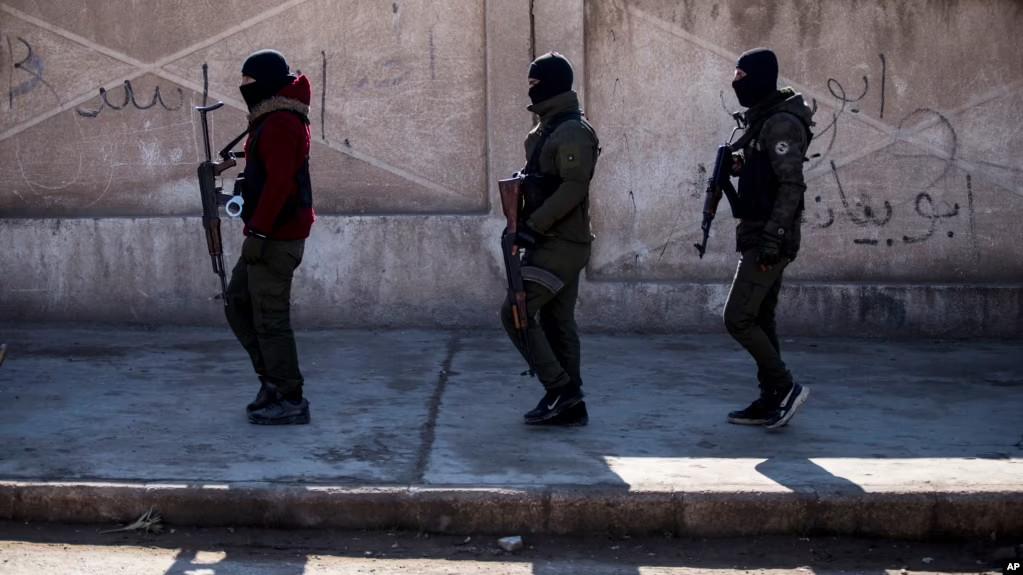
Major Foreign Terror Attack on US ‘Almost Inconceivable’ Right Now
Foreign terrorist groups, including some Islamic State and al-Qaida affiliates, may have the desire to launch major attacks on U.S. soil, but decades of counterterrorism work have made carrying out such an operation close to impossible at the moment, according to a top U.S. homeland security official.
Nicholas Rasmussen, the Department of Homeland Security’s counterterrorism coordinator, Monday called the possibility of an attack reminiscent of September 11, 2001, when al-Qaida terrorists hijacked four aircraft and killed nearly 3,000 people, “almost inconceivable.”
“We have achieved what I would call [a] suppressive effect on the ability of groups like ISIS and al-Qaida to carry out large-scale attacks here in the homeland,” Rasmussen said, using an acronym for Islamic State
“That is not nothing,” he told an event hosted by The George Washington University’s Program on Extremism. “That is something pretty significant and came at great cost.”
Rasmussen’s statement comes just weeks after top military and intelligence officials testified before Congress, warning that Islamic State’s Afghan affiliate is looking to attack U.S. or Western targets.
IS-Khorasan “can do external operations against U.S. or Western interests abroad in under six months with little to no warning,” U.S. Central Command’s General Michael Kurilla told lawmakers earlier this month.
A week earlier, Lieutenant General Scott Berrier, chief of the Defense Intelligence Agency, told lawmakers, “It’s a matter of time before they may have the ability and intent to attack the West.”
Earlier this year, Christine Abizaid, director of the National Counterterrorism Center, called IS-Khorasan, the “threat actor I am most concerned about.”
For now, U.S. military and intelligence officials agree with Rasmussen that the likelihood of an attack on U.S. soil is low, and that is it more credible IS-Khorasan or other groups are more likely to target U.S. or Western interests in South Asia or Europe.
But even Rasmussen worries the threat from groups like IS-Khorasan could rise if the U.S. and its allies and partners are unable to maintain pressure on foreign terrorist organizations.
“I worry that the suppressive effect that we have achieved at great cost is not permanent,” he said Monday. “There’s certainly nothing about that condition that would suggest that it will be permanent, naturally or on its own.”
Some lawmakers and officials have been especially concerned, pointing to a loss of on-the-ground intelligence following the U.S. withdrawal from Afghanistan in August 2021.
Since that time, the U.S. military has carried out only one counterterrorism strike in Afghanistan, killing al-Qaida leader Ayman al-Zawahiri last year. And military officials have cautioned that gathering intelligence from the air, via planes or drones, is difficult due to the long distances between U.S. bases and the target areas in Afghanistan.
As a result, senior U.S. military commanders worry they are unable to access key details and intelligence that might give the country more warning of an impending attack.
"Our intelligence is degraded" since US withdrawal from #Afghanistan, per @CENTCOM's Gen Kurilla
"I believe we can see the broad contours of an attack. Sometimes we lack the granularity to see the full picture…"
— Jeff Seldin (@jseldin) March 16, 2023
Rasmussen acknowledged such concerns, describing the situation as “suboptimal.”
“We are actively in a risk management and risk mitigation posture, trying to take the best advantage we possibly can of the residual intelligence resources we have,” he said. “I’m confident, though, that we’re looking for and at the right things to gain that warning.”
Domestic terror threat
Despite his confidence that the most severe threats from foreign terrorist organizations have been mostly mitigated, Rasmussen warned the overall threat environment is getting worse.
“The threat environment our national security and homeland security professionals are dealing with is more diverse, more dynamic and more complicated than any other point previously,” he said, further noting that the threat level in the U.S. is on “a nearly constant upward trajectory.”
“The diversity of different extremist thought streams, ideologies, narratives gripping various segments of our population here in the United States is at an all-time high,” Rasmussen added.
Border security
Rasmussen also acknowledged concerns about border security, especially along the U.S. border with Mexico.
However, he said there is currently nothing to suggest any terrorist organization is trying to use the southern border to infiltrate the country.
“What we have not seen is any information that suggests that foreign terrorist organizations, groups, are actively using or trying to use a perceived vulnerability in this area to contribute to their operations,” Rasmussen said in response to a question from VOA.
“That doesn’t mean though that we don’t need to be concerned about and working hard to address the way in which terrorists or people with terrorism links might exploit vulnerabilities at the southern border,” he added.
Source » voanews





